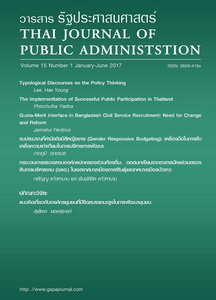Gender Responsive Budgeting (GRB): A Tool for Driving Equality in Development Administration
Keywords:
Gender responsive budgeting, gender equality, development administration, equality, main stream economic developmentAbstract
This article reviews the concept of Gender Responsive Budgeting (GRB), emphasizing the obstacles incurred by the difference between opportunity and accessibility to resources by males and females in different cultures and societies. This form of budgeting provides equality amongst users and equity of resources for both males and females. In practice, GRB budgeting opens with an evaluation of past and on-going policies in order to obtain information for setting up new programs and projects, including new public services. GRB promotes optimum budget allocation, as well as the underlying dimensions of good governance, such as accountability and transparency in public mechanisms. Not only does GRB solve the gender equity issue, it also enables national development to be driven along various aspects. In order to adopt GRB in Thailand, it is crucial that politicians, administrators, public officials, and other stakeholders involved in budgeting, should strive to come to discern and understand the benefits of GRB. In fact, once GRB is perceived to be easily adaptable to prior national budgeting processes, it will be widely adopted by various sectors. To ensure its sustainability throughout all sectors, GRB would be institutionalized through the writing up of a GRB manual, a revision of budget requisition forms, the drafting of budgeting bills and other relevant regulations.



